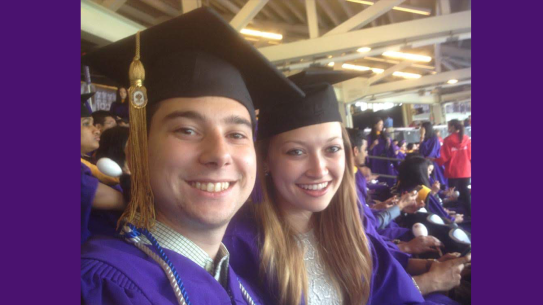Formula For A Genius Class
We need to equip young people with the emotional wisdom and educational savvy to recognize new markets and solve for real needs
- Jerry M. Hultin for Forbes.com October 29th, 2009
- Source: http://www.forbes.com/2009/10/29/education-innovation-investment-leadership-thought-leaders-hultin.html
Currency by the trillions is flowing from governments to keep the global economy from spiraling into depression. But wise world leaders are looking beyond short-term stimulus plans to investments in technology that can grow their economies and generate more high-paying jos. These investments bequeath our grandchildren a valuable infrastructure: Inexpensive medical devices that vastly improve health, bio-materials that replace petroleum and urban infrastructure that addresses the challenges of more than half the world's population.
As the information technology revolution has demonstrated, the right innovations will create economic value and social goods using fewer physical resources--a recipe for a sustainable environment and strong economies worldwide.
I offer some of the lessons the Polytechnic Institute of New York University has learned about how to efficiently move innovation out of the laboratory and into everyday life. For while the academic community rewards pure scholarship, and humankind owes a debt to the scientists and mathematicians who produce pure research, we believe the rest of us must disseminate and commercialize knowledge quickly, in the hopes of rebuilding wealth and improving human welfare.
Step One: Singular Courage
Research by the Kauffman Foundation reveals that young people are far less likely than older Americans to become entrepreneurs; however, our experience at NYU-Poly indicates students are eager to tackle the world's scientific and technical problems. Perhaps all they need is experience to supplement their academic knowledge.
We involve even undergraduates in research projects for government and industry--an opportunity more typically extended to graduate students. By bringing more young people into real-world research projects, our partners get the thinking of people who see the world through a different lens and who are unfettered by life's hard knocks of failure.
There's another simple management lesson called "fun" that we cannot claim to have invented, but our amazing results make it worth repeating. Every year, NYU-Poly stages a student Inno/Vention contest.
Winners have cooled a laptop with DNA, created carbon and titanium nanotubes that can store hydrogen to fuel an emissions-free automobile, and captured the exhaust heat of a car to power its headlights.
By nurturing traits of entrepreneurship in students and faculty who are by nature often more comfortable in scientific pursuits, we give them the courage and skill to take an idea from invention to manufacture--the point at which companies typically generate permanent, high-value jobs.
Far more often, though, the best companies have been built not by a single multi-skilled genius but by multiple visionaries.
Step Two: Matchmaking
Many entrepreneurial successes sprang from youthful encounters: Paul Allen and Bill Gates met in high school; Steve Jobs and Steve Wozniak met during Jobs' summer job. But what of the rest of the entrepreneurs and researchers? How can venture capitalists and inventors meet their perfect match?
Business incubators are one tested method. We are expanding upon the formula by creating an environment that deeply integrates academics and the commercial world. By employing substantial numbers of business and technical students, this system allows start-up companies to subcontract accomplished post-graduate researchers as well as a large number of undergraduates at internship rates. The fledgling businesses thereby get business and technical acumen they could never otherwise afford, while students learn first-hand the lessons of entrepreneurship.
The inventions of one information-technology faculty member and his students already employ eight students and graduates. Another entrepreneur launched a successful product by employing 25 student mathematicians. And in one of my favorite experiments in business-tech partnership, NYU Leonard N. Stern School M.B.A. students are creating business plans for NYU-Poly technical inventions--patents on brilliant ideas that otherwise could have languished in archives for years if not forever.
One of our incubating companies, which goes by the memorable moniker ChubbyBrain, is also tackling the heavy lifting between invention and capitalism. It is developing a database of venture capitalists and their investment goals--another promising dating service for just the kind of companies that are creating new jobs: start-up businesses.
Step Three: Open Wide
Those who seek success in technical innovation must open their cultures as much as their wallets. It isn't enough to innovate or invent a product; the successful innovation often requires a new market, too.
An example of a company that opened its wallet to innovation and was repaid manyfold is Procter & Gamble. Thanks in large part to smart, oversized investment in innovation, it reports virtually all its organic sales growth over nearly a decade can be tracked to new brands, new products and innovations to products. By opening its mindset to developing-market business, it counts five times the average sales of its competitors in that segment, and substantial growth in profitability, too.
Equally important to P&G's financial investment is what Harvard Business School professor Henry Chesbrough calls the "Open Innovation" model: Relying on the 1.5 million scientists with relevant research who are outside the company, and not simply to the 8,600 employed by P&G.
NYU-Poly's guardian angel on the subject of opening a culture to technical innovation has been former astronaut Charles Camarda, our professor of innovation. When NASA was at its most authoritarian state and politicians and program managers were dictating technology, Camarda's band of NASA inventors borrowed the tactics of Lockheed Martin's famed Skunk Works to informally solve some of the toughest post-Columbia problems. He speaks wisely when he reminds us that faculty and corporate leaders need to learn the same kind of grass-roots management that NASA is rediscovering: Unleash the power of our inventors.
Now is the time to write large the formula for invention, innovation and entrepreneurship. As high-paying manufacturing jobs inevitably shift to lower-wage countries, it is incumbent upon us all--families, academia, government and business--to hone our sense of entrepreneurship and invest technical resources wisely. Merely spending on technology isn't enough. Investing in technology-smart people who can visualize the needs of our planet and who are equipped, emotionally and educationally, to recognize new markets and solve for real needs--now that is the investment to make.
Jerry Hultin is president of the Polytechnic Institute of New York University. He previously served as dean of the Wesley J. Howe School of Technology Management at Stevens Institute of Technology, and from 1997 to 2000, as undersecretary of the U.S. Navy.




